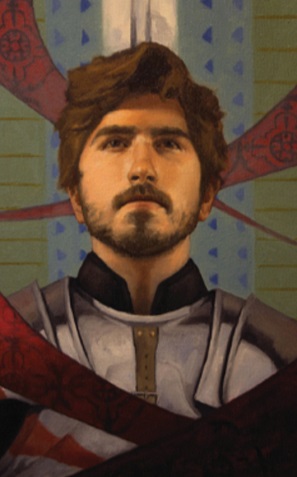Certificate Program in Painting
Students who have completed the Certificate Program in Drawing may enter the Certificate Program in Painting. It is the natural continuation from the Drawing Program. Students build on the skills they have mastered with drawing, and move into painting in oils, first with the grisaille and then with colour. The foundations of good draughtsmanship and a keen understanding of the formal elements of shape, value and edges are needed, before tackling the complexities of composition, hue, value, chroma and the practical application of paint.
A student must complete 9 of 11 assignments.
Grisaille Cast
In this first step into oil painting, a small plaster cast is painted in grisaille. Students will gain an understanding of and the ability to convey shapes, value and edges, along with the additional challenge of working in a wet medium.
Colour Cast 1
The first colour painting is that of a plaster cast, typically a life-size 3-dimensional bust. It is a larger painting than the grisaille, and muted tones of the white bust are offset against a neutral colour background, a foreground and a frontispiece that create the illusion of depth..
Colour Cast 2
The second colour painting is a larger plaster cast, either of a whole figure or torso. An added element of complexity is the drapery that surrounds the cast. Drapery required the student to understand and convey passages of flatness, with a movement of tone, as well as all the different variations of the folds.
Grisaille Mastercopy
The value of making Mastercopies is for the student to learn from a Master Artist by replicating the techniques employed by the Master in completing a painting. In the copying process, the student leans experientially how to use value, turn form, and achieve a harmonious balance. Understanding these concepts adds to the visual vocabulary of the student.
Colour Mastercopy
The lessons learned in the Grisaille Mastercopy are used and amplified in the colour Mastercopy. Students choose a figurative work from their favourite Master painter, to learn and internalize the methods of that painter. The student is encouraged to research different artists and emulate a style that has personal appeal.
Still Life 1
The assignment of the first Still Life is to paint a shiny white object with a brilliant highlight, together with a red cloth, and a piece of greenery to offset the red. It is an exercise in value control and glazing techniques, while employing the skills of rendering learned from the cast paintings, and the drapery of the second colour cast.
Still Life 2
This is the Tenebrist painting. The student creates a shadow box and a sense of depth and atmosphere. Composition is of the utmost importance, and the student learns to compose the picture by their choice and placement of objects. The scene emerges out of depth, and overlaps the foreground into the viewer’s space.
Still Life 3
In this assignment, the student concentrates on texture. The background itself is a discernable object, and the objects in the painting must display a variety of textures. Mastering old wood, velvet, metal, leather and dusty objects all make for virtuoso painting skills.
Still Life 4
This Still Life assignment requires the student to use perishable objects which need to be replaced during the timeframe of the painting. This is a procedure that will be used many times over the course of a Still Life painter’s career.
Portrait with Costume
This assignment integrates the student’s life painting skills with those of painting drapery from earlier Cast and Still Life projects. Drapery translates into clothing. Skin tones and knowledge of anatomy are used to convey a convincing portrait. This painting must be done from life.
Self-Portrait
The Self-Portrait combines a number of skills; mastery of portraiture, drapery, clothing, and a meaningful and symbolic background. This is painting from life with the use and interpretation of photographic references. A Self-Portrait is compelling to audiences as it is a glimpse into an artist’s view of himself.











